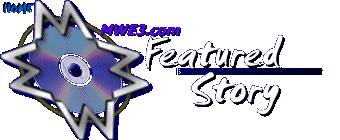Play In Time
an interview with
IAN ANDERSON
by Robert Silverstein
I was a bit surprised myself when just before this interview, Ian
Anderson told me that he was a bit surprised that a guitar magazine
would want to interview a flute player as he described it. Long time
Jethro Tull guitarist Martin Barre was interviewed by this writer
in 20th Century Guitar several years back after his excellent instrumental
Stage Left album. But getting back to Ian’s guitar playing,
I countered Ian's guitar comment, recalling that back in 1971, witnessing
a Jethro Tull concert at the Fillmore East in NYC, I was just stunned
watching as Ian and Martin Barre skillfully entwined their acoustic
guitars on a live, note perfect version of the Benefit classic
“Sossity.” An excellent musician then, Ian’s acoustic
guitar playing just gotten better over the years as was witnessed
by early fans on masterworks like Thick As A Brick and Songs
From The Wood—two classic ‘70s Tull albums that crafted
a groundbreaking mix of acoustic guitar and hard rock electric guitar—a
sound that in 1969 became Tull’s trademark sound. Bringing the
band's history into focus, 2008 was the 40th anniversary of the first
Jethro Tull album This Was—back when the band had rock
guitar icon Mick Abrahams in the lineup. Complete with the original
mono mix, a new stereo mix, rare BBC tracks and singles cuts, EMI
/ Capitol’s 40th double CD set is a great way to re-experience
This Was. 2008 found Ian out on the road again for a Jethro
Tull world tour. Several recent archival DVD's on Eagle Rock were
issued in 2007 while a fresh Tull DVD documentary is also planned.
Robert Silverstein of MWE3.COM and 20th Century Guitar spoke with
Ian Anderson on June 27, 2008, just prior to Tull’s Summer 2008
tour.
{This interview with Ian Anderson first appeared in the September
2008 issue of 20th Century Guitar magazine with the title This Was:
40 Years Of Jethro Tull. Complimenting Ian's interview in the same
issue of 20th Century Guitar, publisher Larry Acunto also included
his own companion piece 2008 interview with founding Tull guitarist
Mick Abrahams as well. Humorous and historic stuff, including Mick
remembering Tull's early "Love Story" single, is worth it
if you can find a copy! MWE3.com now presents the 2008 Ian Anderson
interview in its entirety}
MWE3: Starting with some music history, can you recall Jethro Tull’s
first shows in New York at Fillmore East?
IA: I do remember it quite vividly because we arrived for shows in
Boston with Don Law, the Boston Tea Party and Bill Graham and Fillmore
East and I think we also played one of the jazz festivals on that
first outing, one of the Newport Jazz Festival’s series of concerts.
And amongst those very early shows, the Fillmore was one of those
that stood out because we knew, even before we got to America, of
the already quite famous, or even infamous Bill Graham, who could
make or break an act if he chose to do it. And he certainly stopped,
in their tracks, some of the British bands that he didn’t like.
Notably, a band called Family, who came to appear at the Fillmore
East and Bill decided they would never work in America again, and
they didn’t. So we knew he was an important guy and impressing
him and getting his support was important, as indeed there were a
few other promoters around different parts of the U.S.A who, again,
we knew they were important guys to win over. And happily we were,
by and large, able to do that and established a good rapport with
promoters in various parts of the country on our first thirteen weeks
of playing the U.S.A.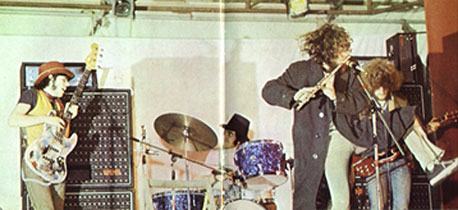
MWE3: The first show I saw at the Fillmore East was Jethro Tull when
I was 17 in 1971, a few weeks after Aqualung came out. Too
bad those shows hadn't been professionally filmed, because people
today would have a wider concept of your significance.
IA: Well, those shows you’re referring to were a couple years
later in 1971. But, sure we were playing the Fillmore East, I think
we must have played there I would have thought four, five or six times.
And of course it didn’t last too long as a venue but it was a
very important part of the development of live rock music entertainment
in the U.S.A. Fillmore West of course, in a very different way. It
had a totally different atmosphere. A totally different clientele
as well. But in it’s own way was an important part of the West
Coast music scene. It was all good stuff. You’re quite right.
Nothing was really recorded or filmed. The options really didn’t
exist back then to do those things very easily. And so there’s
very little live footage of early Jethro Tull. And such, as there
is, is mostly included in DVD’s which are either already out
or about to come out in the next few months, in the case of one documentary
DVD of Jethro Tull’s history. So, yeah it would have been nice
to have had some...There is actually one of Bill Graham’s dates,
I believe it was...it might actually even have been Tanglewood, which
is normally reserved for classical music. But I think we did actually
play there with The Who in the early ‘70s. And that would have
been around the time that we were just unveiling the Aqualung album,
‘cause I know we played “My God” on that tour. That
is recorded somewhere. There is some, I believe in black and white,
there is some footage of that concert. But who owns it and where it
is, I couldn’t tell you.
MWE3: Tell me more about the upcoming Tull documentary?
IA: Well, there’s a new one coming out which I believe is due
to be in the next few weeks available at least in some countries like
the U.K. and Germany. I think it’s aimed for more in the summer
months in the U.S.A. simply ‘cause we’re going to be there.
And I can’t tell you much about it other than some many months
ago, I and other band members, ex-band members and various other people
did interviews for a production company putting this together. And
I still have not seen a finished copy, so its something that I can’t
really give you a first hand impression of. I’ve seen a rough
cut of some of it but I haven’t seen a completed product. But
it is scheduled for release sometime in a few weeks from now I believe.
There are rumors that its already has been released but I don’t
think in fact you can actually buy a copy yet. I think some press
and promo copies were due to go out but they had a fault and were
recalled. So I should think it’s in this next or two that the
firsts will be winging their way to people in the media. It’s,
as I’ve said, it’s a bit of a...it’s for train spotters
and stamp collectors. A bit of an anal kind of thing being into all
this detail about bands and early members and how this gave way to
that and somebody got chucked out of the band. And somebody else had
an unfortunate gardening accident or whatever it might have been.
It’s all a bit...it’s not for everybody. I’m sure it’ll
interest some of the more dedicated and obsessed fans. I can’t
honestly say I found it particularly engaging to watch and listen
to the rough cut that I saw. Just like a bunch of old guys wincing
about the past really. It didn’t strike me as being particularly
interesting. But then, it’s all stuff that I know of and have
heard before. Talking to the other guys in the band...I mean they’re
people that I regularly see or even play with. And so it’s not,
it wasn’t for me particularly interesting. But then, wait. I’m
much to close to it, perhaps to see how other people would find it.
But, it’s what it is.
MWE3: How’s Martin Barre these days?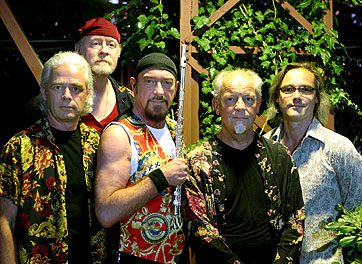
IA: Well, I hope he’s doing okay because he’s got to present
himself at the airport on Sunday and fly to Italy for the next bit
of touring. But he’s been in pretty good shape since he had some
surgery at the end of last year. He had to have a couple of months
when he couldn’t play guitar but he’s been fine since he
started again. And I believe he’s actually doing some solo dates
towards the end of this year in the U.K. and beginning to think about
recording some solo tracks towards the end of the year. So, he’s
in good shape and he’s playing on all the Jethro Tull shows this
year.
MWE3: I loved Martin’s last album Stage Left. I heard
in honor the 40th anniversary Tull are going to be playing a lot from
the first three albums on this tour.
IA: Well we’ve certainly been, thus far, concentrating on the
music from the first or four albums. There’s been a greater emphasis
on, particularly the first two albums. But as we progress through
the year, I’m sure that’ll kind of lighten up a little bit
and broaden out to include things from later decades. The 40th anniversary
year, I think we are sort of focusing on what that early period of
Jethro Tull was about. For people who saw Jethro Tull in 1969, 1970,
then there will be a lot of the music that we played on those tours,
the first tours of North America, that are likely to be in the set
list when we play this August. It’s definitely about recognizing
that very early period of Jethro Tull’s work. And we throw in
a few things that are from later years, but we’re sticking pretty
much with music which is more, although there are obviously acoustic
elements, it tends to be more upbeat and more of it is the rock oriented
Jethro Tull. The more sort of jazz and blues and sort of rock oriented
side of the work. But that’s now. By the end of the year I shall
be playing music for sitar with Anoushka Shankar for seven shows in
Asia. So I kind of have to rethink (laughter) my musical policy by
the time I get towards the end of the year and start thinking about
music for flute and sitar. And she’s a lot better looking than
Martin Barre.
MWE3: Is that upcoming thing with Anoushka Shankar for an upcoming
project or some gigs you’re playing?
IA: Well, it’s a few concerts we’re doing in India and Dubai
and Singapore as Jethro Tull. But Anoushka Shankar is our other act.
And she’ll be opening the show, playing some classical Indian
music and then we’ll play some stuff and then we’ll get
together for a third set where we combine to play some of her more
recent pieces from her most recent album that I suggested we might
do with her and something else of ours that we can find a role of
sitar for. And then I’m writing a suite of music which may or
may not be the basis of an extended piece that we’ll play together
using a couple of her musicians and us. So, but it is, as you can
imagine writing for an instrument like the sitar is not like writing
for another guitar player. I mean it has its assets and it has its
limitations as an instrument. So you have to think in quite a different
way in terms of what you can do in terms of harmonic movement within
the piece of music because of course you’re dealing with...thirty
seven strings. And thirteen of them are resonating essentially to
a chromatic scale. So you’ve got to be careful about what you’re
doing. Generally speaking, sitars are tuned according to the raga
and according to the key that they’re in but you do find both
the major third and the minor third in the sympathetic strings. And
so you’ve got to be careful ‘cause you can get some pretty
nasty things happening when you fire up the major third and everybody
else is playing the minor chordal setting for it. It’s an instrument
you’ve got to be pretty careful with to find a way to work along
side it. It’s very rarely been done. I mean it has been done
a little bit by other people. I’m trying to find elements, motifs
which are Celtic in origin and so I’m hoping Anoushka will, rather
than her usual C sharp will tune to D for playing stuff with us. And
she has recorded some things in a D tonality before and so I picked
a couple of those to suggest that we play those pieces with her. We
will be attempting to find common ground within what we call “The
Irish Key”, the key of D major, but of course related keys like
E minor and G major are going to be...we can slip in and out of those
too.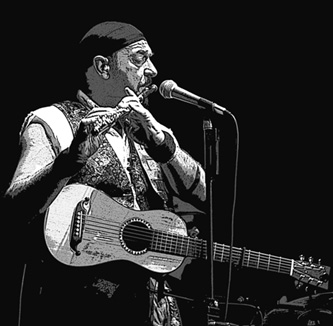
MWE3: Besides playing with some of the greatest guitarists in rock
history, I always considered you to be quite a masterful guitar player,
on your famous Martin acoustic. I can remember at that 1971 Fillmore
East show, you and Martin playing a beautiful duet on “Sossity,
You’re Woman” sitting down side by side each on acoustic.
What Martin guitars are you using on the current tours?
IA: I only bring one guitar with me. I’m not one of those people
who likes to bring lots and lots of stuff unnecessarily. I travel
very light. I travel with one piece of hand luggage and a laptop computer.
And I have a guitar case which also contains a spare flute, my radio
gear, various spare pieces of this, that and whatever. Spare batteries,
strings and things all cramped into a guitar case that is legal size
and legal weight to travel on airlines. And I carry another case which
has got some other electronics, the rest of the radio gear, some leads,
microphones, a few other backup bits and pieces which go in a sort
of heavy duty polyethylene case that is designed for transporting
electronic equipment. Again, its legal size and weight for the airlines
and that’s it. So I just carry two pieces of professional check
in equipment and some carry on luggage and that’s it, wherever
I’m going in the world. Whether I’m going for three weeks
or three hours, I travel the same, take the same stuff with me. My
guitar, in order to fit into the guitar case with the other bits and
pieces that I need to carry, is a three quarter size, based on an
18th century parlor guitar. It’s a slightly shorter scale neck
and a much smaller body. So, it’s not quite as tiny as some people
would describe, a so-called travel guitar but it’s certainly
smaller than even the smallest bodied, not the smallest body, other
than the size five Martins. It’s smaller than the 36, a size
two and a half. It’s smaller than that. And I have quite a few
guitars made by Martin, going back as early as about 1835, which is
the oldest one I have. The staffer had it made in New York, probably
around ‘35 or ‘36. Certainly one of his very earliest guitars.
And then I have a bunch of stuff from the mid to late 1800’s
which are parlor guitars. Again, they’re size one’s, two’s,
two and a half’s, and then I have a few from the 20th century
(laughter) - single 0-42’s, single 0-45’s, that sort of
thing. These are guitars, they’re lovely things to have, lovely
things to occasionally pick up and play or just look at but I wouldn’t
ever take them out on the road because they’re way too delicate
and not really suitable for playing in live concerts. And there’s
no way under the sun would I let one of those things go into the hole
of an airplane when I see what happens to the luggage that we do check
in. In the way that it is savaged by airline loaders, baggage loaders
around the world. I mean they just toss things around. They really
don’t give a shit. So I would never take anything that... In
fact I just had a copy made of my stage guitar because chances are
mine is going to get trashed or lost or stolen. And so I now have
a faithful replica of it that I had made, which at least is sitting
faithfully locked up in my house should anything happen to the one
that I normally play on stage. I always laugh...it’s just Spinal
Tap, seeing these rock bands where they have these racks of guitars
and the guitar player has sort of about ten guitars on stage. (laughter)
What does he need all those for? It’s like someone who really
needs...ummm. Someone who’s deeply insecure in life, (laughter)
has to go around with more than one guitar. Carrying one of the damn
things is bad enough. (laughter)
MWE3: What kind of strings do you use on your stage guitar?
IA: These days I use D’Addario strings. I use a coated string
‘cause I get pretty wet on stage and since the advent of coated
guitar strings, they really are a huge boon. I used to have to change
my strings, literally every day when I used, in the early days, in
the ‘70s I used to use silk and steel strings on a single 0 Martin
New Yorker guitar. Yeah, in those days, I mean I would literally change
strings, every, every day, every show. But with coated strings I,
sometimes I get through five or six days, or five or six concerts
with the same set of strings which is brilliant. But once in a while
you just find, because of the incredible humidity and the change of
the temperature, the amount of dirt and dust sometimes playing out
doors in different places, the strings for a couple of days, they’re
really losing it. But generally speaking, I find the coated strings
great. And D’Addario are a good brand and they also make strings
for other instruments that I play like the mandolins and the various
gauges of things I use on bouzoukis and stuff. So there’s a lot
of stuff to choose from.
MWE3: I was reading in the liner notes of the 40th anniversary set
on EMI / Capitol of This Was that you had an electric guitar
before you started on flute. Do you still play electric guitar either
in the studio?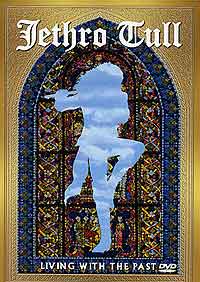
IA: On a lot of records, particularly early on I used to play guitar
quite frequently. I did play electric guitar on a few things in the
latter part of the ‘80s too. But generally speaking, it’s
just not an instrument I particularly like. I still have a few of
them knocking around somewhere. They’re not things I ever take
out of the case anymore. They’re just not instruments I’ve
ever particularly warmed too. As a child I listened to acoustic music.
I listened to jazz and blues and as a teenager I began playing acoustic
music. I did play electric guitar for a little while when I was in
my late teens and then when Eric Clapton came along, and I heard him
on an album by John Mayall’s Bluesbreakers featuring Eric Clapton,
that’s when I realized that he was a much better guitar player
then I was ever going to be and I should look around for something
else other than electric guitar. Which I did. And I picked up the
flute and started playing that at the beginning of 1968 when Jethro
Tull began. And I continued to use acoustic guitar for writing songs
through ‘68, ‘69 and it wasn’t really until 1969 I
started playing again when I also started playing mandolin in 1969
and got more into acoustic guitar playing through ‘69, ‘70
and by ‘71 on the Aqualung album I was playing guitar
quite a lot on stage. Acoustic guitar. And it’s always been a
part of my live performance. It depends on the set list. Sometimes
I only play guitar a couple of times in the night and then other times
when I playing it in ten songs or something. It just depends on the
set list.
MWE3: The 40th anniversary edition of This Was on EMI has a
new stereo mix of the album and there’s a never heard mono mix,
which I’ve never heard, that was done for the original release.
IA: That’s right. ‘68 and ’69 you know, we all did
mono versions of our mixes for singles and albums simply because a
whole lot of people back then didn’t have stereo players. And
the problem was that if you had a mono player and you played the stereo,
it sounded pretty crap. And it was actually better for people who
only had mono equipment to have a mono mix and that’s why we
did it. But by ‘70, ‘71 more and more people were getting
stereo players and clearly at that point, although radio was still
in mono, we were able to start listening with headphones and so stereo
mixes became much more...the important thing I guess, from about ‘69,
‘70 onward. But back in ‘68, the mono mix was probably the
one that we paid more attention to. Stereo, it was a bit rupture. (laughter) We sort of just did it but
most people were going to hear it in mono, so we paid more attention
to the mono mix when we did that first one. And the mono mix is indeed
the original mono mix and the stereo mix is a remix not just a remaster.
There’s a bunch of radio sessions from BBC in the summer of ‘68
which were also recorded in mono because it was just AM radio to you,
media wave to us. It’s kind of an interesting collection of music
that is, as it says, a collector’s edition. It’s nice to
have done that and interesting. I personally would never have thought
about putting out the mono mix. I was quite impressed with EMI when
they said, ‘Oh, we’ve got a mono mix here, why don’t
we release that as well!’ (laughter) When I heard it, I thought
it was really good! It’s actually a very solid, kind of focused
mix. Kind of fun to hear.
Stereo, it was a bit rupture. (laughter) We sort of just did it but
most people were going to hear it in mono, so we paid more attention
to the mono mix when we did that first one. And the mono mix is indeed
the original mono mix and the stereo mix is a remix not just a remaster.
There’s a bunch of radio sessions from BBC in the summer of ‘68
which were also recorded in mono because it was just AM radio to you,
media wave to us. It’s kind of an interesting collection of music
that is, as it says, a collector’s edition. It’s nice to
have done that and interesting. I personally would never have thought
about putting out the mono mix. I was quite impressed with EMI when
they said, ‘Oh, we’ve got a mono mix here, why don’t
we release that as well!’ (laughter) When I heard it, I thought
it was really good! It’s actually a very solid, kind of focused
mix. Kind of fun to hear.
MWE3: George Harrison said mono was the best way to listen to Sgt.
Pepper.
IA: Well, he may well be right in a sense because Sgt. Pepper,
rather like our first album suffers technically from having been
recorded on 4 tracks. And therefore there were elements of the mix.
Once you tried to find stereo, you put things into stereo. You unfortunately
drag the bass guitar with the high hat or the tambourine or something
else that happened to be jumped on the same track. So the stereo mix
of Sgt. Pepper, it’s actually quite hard really to find
a good way to hear some of these things because they do sound a little
odd. Instruments keep popping up in places where they don’t really
feel very comfortable in the mix. That’s indeed part of the problem
with recording on so few tracks. By the time we had eight tracks in
‘69 and sixteen tracks in 1970 and onwards then, you could be
far more careful with a stereo mix to make things sound kind of more
natural but just broaden out the image fields without any unfortunate
consequences. But back with four track recording, stereo mixes were
invariably not really always that satisfying. Certainly the case with
our first album there are places where there are odd instruments or
even vocals in unfortunate places in the stereo spectrum. You really
wouldn’t choose to put them there but you (laughter) had to because
you were forced to commit yourself to jump tracks together in order
to free up another track for another overdub. So things were a little
different back then.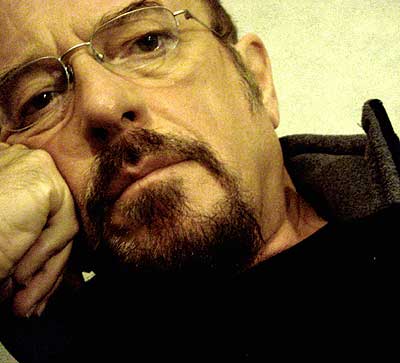
MWE3: Can you say something about the Jack In The Green DVD
that just came out on Eagle Rock? There’s a great version of
“With You There To Help Me.”
IA: Well yeah, the Jack In The Green album is basically from
German television’s collected remnants of various performances
over the years that were in the vaults and go back as far as ‘71
or 1970 maybe, through to somewhere in the ‘90s. And the bulk
of it sits in the kind of ‘80s period of the various things that
are on there. But it’s all recorded absolutely live to, probably
off the front of the house mixing console. And its remarkable how
good the mix is and how good the picture is. I was really surprised
when I saw that. Not only how good it was in terms of performance
and playing, but it was also from an audio and visual point of view,
it was actually really good. I was quite proud in a way that we did
have all this stuff still lying around there and the TV company hadn’t
just wiped the tapes. It was good to see. So, I’m pretty pleased
with that. And it’s all done in Germany. It isn’t really
obvious when you watch it. It could have been anywhere ‘cause
some of those German tours, we were probably playing in Detroit the
week before. (laughter) So it would have been pretty much similar
performances. These just happened to be the ones that were captured
for TV. ‘Cause we usually give local TV a couple of songs during
the set. We didn’t record a whole show but they had like a couple
songs here, a couple of songs there from various concerts in Germany
and they’re pretty good.
Thanks to Ian Anderson @ www.J-Tull.com
- Eagle Rock @ www.EagleRockEnt.com
- EMI Records and Anne
Leighton
